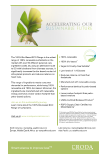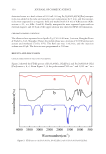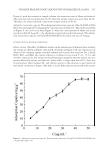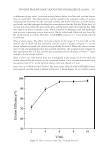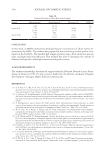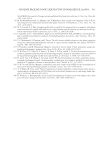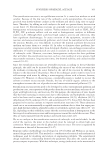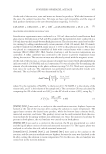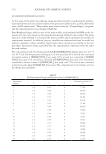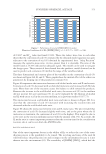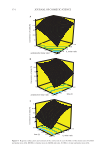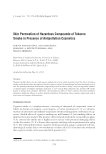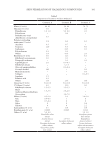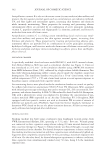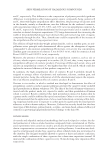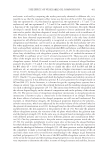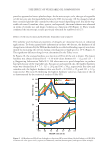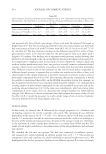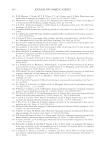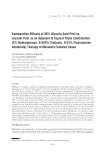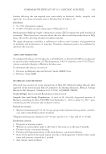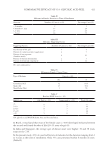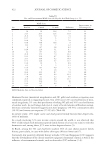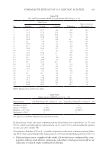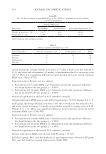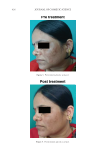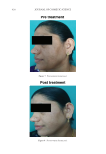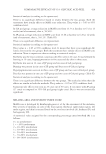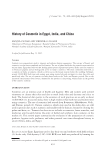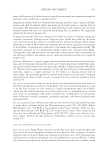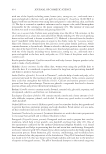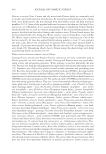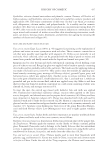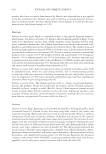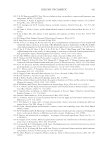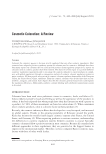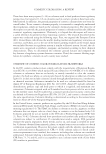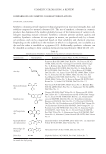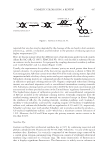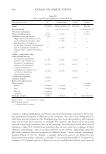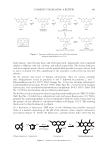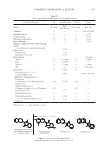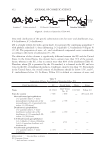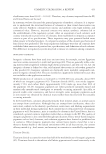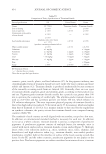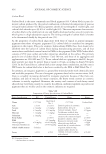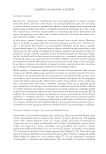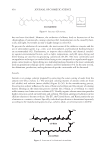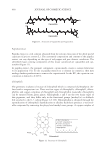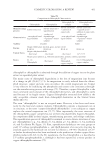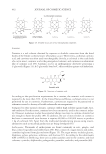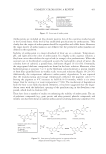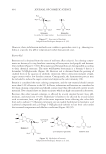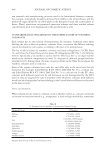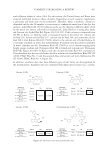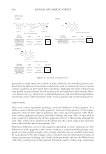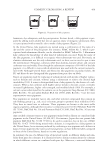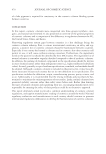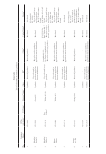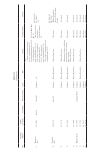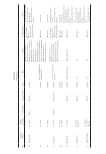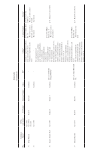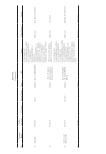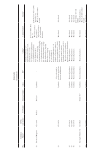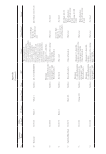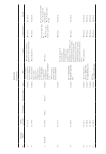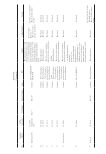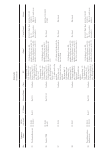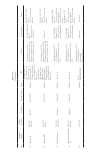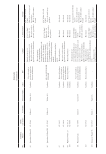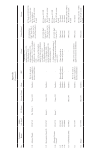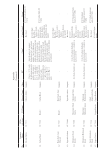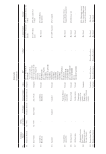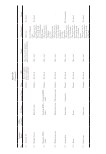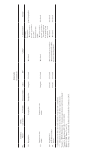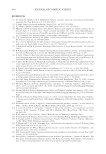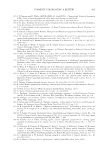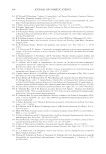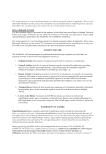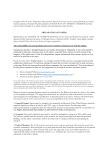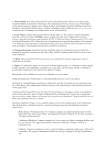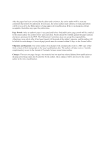422 JOURNAL OF COSMETIC SCIENCE Hormonal factors (menstrual irregularities and OC pills) and outdoor occupation were commonly reported as triggering factors. Out of 60 cases 12% cases had history of men- strual irregularity, 5% cases had past history of taking OC pill and 10% cases had history of outdoor work. As per Tamega Ade A et al. study of facial melasma in Brazilian women, the most commonly reported trigger factors were pregnancy (36.4%), contraceptive pills (16.2%) and intense sun exposure (27.2%) (6). (Table III) In present study, 13% (eight cases) cases had positive family history (first-degree rela- tives) of melasma. In a study involving 324 cases in nine centers around the world, it was observed that 48% of individuals with melasma reported family history of at least one relative with this dermatosis and, among those, 97% were in first-degree relatives (5). In Brazil, among the 302 cases had been studied, 56% of cases shown positive family history, particularly, in cases with darker skin types (African American) (7). Conversely, low positivity of family history in India (33%) and Singapore (10%) suggests that the development of the disease may have epigenetic hormonal control, as well as the influence of environmental stimuli, such as ultraviolet (UV) radiation (7–9). Table VI Pre- and Posttreatment MASI Score (A) Glycolic Acid Peel Group (n = 25) No. MASI Score Improvement in Percentage (%) Baseline 6 week 14 week Difference 1 18 16 10.8 7.2 54 2 24.4 20.3 12.6 11.8 48 3 21.9 17.8 7.9 14 64 4 12.7 10 5 7.7 62 5 10.8 7.9 3 7.8 72 6 19.8 14.8 10.8 9 46 7 8.2 7.5 7 1.2 15 8 9 8.7 2.8 6.2 69 9 14.8 12.6 5.1 9.7 66 10 12 8.7 5.2 6.8 57 11 21.6 17.4 7.4 14.2 66 12 19.2 12.6 8.7 10.5 55 13 23.1 19.8 6.2 16.9 73 14 17.4 12.8 5.7 11.7 67 15 13.9 10 5 8.9 64 16 6.3 5 3 3.3 52 17 12.6 8.7 4.9 7.7 61 18 6.6 5 1.6 5 76 19 16.6 13.2 8.7 7.9 48 20 17.4 14.2 6.2 11.2 64 21 7.8 5.1 3.2 4.6 59 22 21.9 19.2 8.2 13.7 63 23 17.4 12.6 7.4 10 57 24 13.2 8.7 6.2 7 58 25 14.7 6.8 5 9.7 66 MASI: Melasma Area and Severity Index.
423 COMPARATIVE EFFICACY OF 35% GLYCOLIC ACID PEEL In the present study, the most common pattern of melasma was centrofacial, in 32 cases (53%), which was followed by malar pattern, in 27 cases (47%), and mandibular pattern, in one case (2%). (Table IV) According to Sanchez N.P. et al., centrofacial pattern is the most common pattern (affect- ing 63% of all cases) followed by malar pattern (21%) and mandibular pattern (16%) (7). • Fifty melasma cases completed the study (14 weeks) were evaluated for com- parative efficacy and adverse cutaneous side effect of GA peel versus JP as an adjuvant to topical triple combination therapy. Table VII Pre- and Posttreatment MASI Score (B) Jessner Peel Group (n = 25) No. MASI Score Improvement in Percentage (%) Baseline 6 week 14 week Difference 1 13.2 10.2 4.4 8.8 66 2 22.5 17.4 11.1 11.4 51 3 20.1 18.2 16.8 3.3 16 4 13.9 10.8 6.4 7.5 54 5 16.8 9.7 6.8 10 60 6 21 7.6 5.1 15.9 76 7 10.9 7.6 3.7 7.2 66 8 11.7 5.6 4.8 6.9 59 9 16.8 10.8 9.7 7.1 42 10 7.6 5 2.7 4.9 64 11 12.6 10.8 6 6.6 52 12 18.5 17.2 5 13.5 73 13 10 4.4 3.9 6.1 61 14 15.6 10.8 5.1 10.5 67 15 25 12.2 10 15 60 16 7.9 5.6 3.7 4.2 53 17 20.2 17.3 8.5 11.7 58 18 19.4 10.8 8.3 11.1 57 19 8 5.1 3.4 4.6 58 20 12 10 4.8 7.2 60 21 8.3 5.6 2.3 6 72 22 15.9 13.8 5.8 10.1 58 23 23.1 18.9 6.8 16.3 71 24 16.8 12.5 8.3 8.5 51 25 14.4 10.2 3.7 10.7 74 MASI: Melasma Area and Severity Index. Table VIII Improvement in MASI Score (%) (n = 50) Improvement GA Peel Group No. of Cases (n = 25) Jessner Peel Group No. of Cases (n = 25) Excellent (90%) — — Good (75–90%) 1 (4%) 1 (4%) Moderate (50–75%) 20 (80%) 22 (88%) Inadequate (50%) 4 2 GA: glycolic acid MASI: Melasma Area and Severity Index.
Purchased for the exclusive use of nofirst nolast (unknown) From: SCC Media Library & Resource Center (library.scconline.org)



